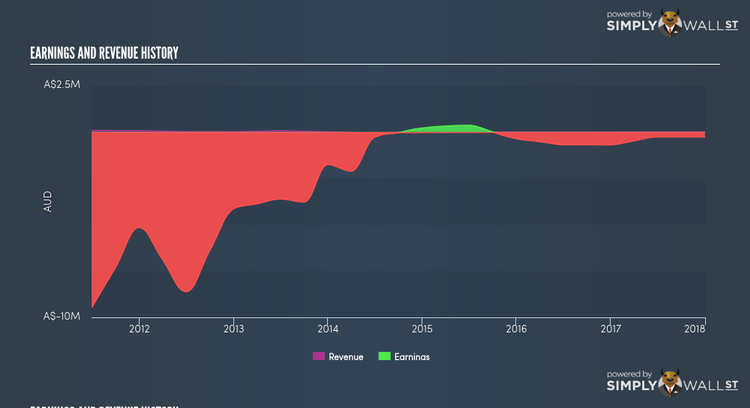How Does Investing In Purifloh Limited (ASX:PO3) Impact Your Portfolio?

For Purifloh Limited’s (ASX:PO3) shareholders, and also potential investors in the stock, understanding how the stock’s risk and return characteristics can impact your portfolio is important. Every stock in the market is exposed to market risk, which arises from macroeconomic factors such as economic growth and geo-political tussles just to name a few. This is measured by its beta. Not all stocks are expose to the same level of market risk, and the market as a whole represents a beta value of one. A stock with a beta greater than one is expected to exhibit higher volatility resulting from market-wide shocks compared to one with a beta below one.
See our latest analysis for Purifloh
An interpretation of PO3’s beta
With a beta of 1.07, Purifloh is a stock that tends to experience more gains than the market during a growth phase and also a bigger reduction in value compared to the market during a broad downturn. Based on this beta value, PO3 will help diversify your portfolio, if it currently comprises of low-beta stocks. This will be beneficial for portfolio returns, in particular, when current market sentiment is positive.
How does PO3’s size and industry impact its risk?
A market capitalisation of AU$13.17M puts PO3 in the category of small-cap stocks, which tends to possess higher beta than larger companies. However, PO3 operates in the water utilities industry, which has commonly demonstrated muted reactions to market-wide shocks. As a result, we should expect a high beta for the small-cap PO3 but a low beta for the water utilities industry. This is an interesting conclusion, since its industry suggests PO3 should be less volatile than it actually is.
How PO3’s assets could affect its beta
During times of economic downturn, low demand may cause companies to readjust production of their goods and services. It is more difficult for companies to lower their cost, if the majority of these costs are generated by fixed assets. Therefore, this is a type of risk which is associated with higher beta. I test PO3’s ratio of fixed assets to total assets in order to determine how high the risk is associated with this type of constraint. Given that fixed assets make up an insignificant portion of total assets, PO3 doesn’t rely heavily upon these expensive, inflexible assets to run its business during downturns. Thus, we can expect PO3 to be more stable in the face of market movements, relative to its peers of similar size but with a higher portion of fixed assets on their books. This outcome contradicts PO3’s current beta value which indicates an above-average volatility.
What this means for you:
You could reap the gains of PO3’s returns in times of an economic boom. However, during a downturn, a more defensive stock can cushion the impact of this risk. Depending on the composition of your portfolio, high-beta stocks such as PO3 is valuable to pump up your returns, in particular, during times of economic growth. In order to fully understand whether PO3 is a good investment for you, we also need to consider important company-specific fundamentals such as Purifloh’s financial health and performance track record. I highly recommend you to complete your research by taking a look at the following:
Financial Health: Is PO3’s operations financially sustainable? Balance sheets can be hard to analyze, which is why we’ve done it for you. Check out our financial health checks here.
Past Track Record: Has PO3 been consistently performing well irrespective of the ups and downs in the market? Go into more detail in the past performance analysis and take a look at the free visual representations of PO3’s historicals for more clarity.
Other High-Performing Stocks: Are there other stocks that provide better prospects with proven track records? Explore our free list of these great stocks here.
To help readers see pass the short term volatility of the financial market, we aim to bring you a long-term focused research analysis purely driven by fundamental data. Note that our analysis does not factor in the latest price sensitive company announcements.
The author is an independent contributor and at the time of publication had no position in the stocks mentioned.

 Yahoo Finance
Yahoo Finance 
